
The hidden cost of college rising student fees The Washington Post
Between 2010-11 and 2020-21, institutional grant aid for undergraduate students increased by 62% ($22.0 billion in 2020 dollars). (Figure SA-3) Between 2010-11 and 2020-21, institutional grant aid rose by $25.6 billion (in 2020 dollars) reaching a total of $71.1 billion in 2020-21. Institutional grants accounted for about half of all grant aid for

Financial costs and benefits of college Importance of college Khan
Adjusting the Price of College Tuition and Fees for Inflation. For some perspective, the National Center for Education Statistics reported that the average tuition and fees at public 4-year institutions were $9,400 in the academic year 2019-2020.NCES has not yet published any prices beyond 2019-2020, but BLS CPI data can be used to calculate how much they have changed over time.
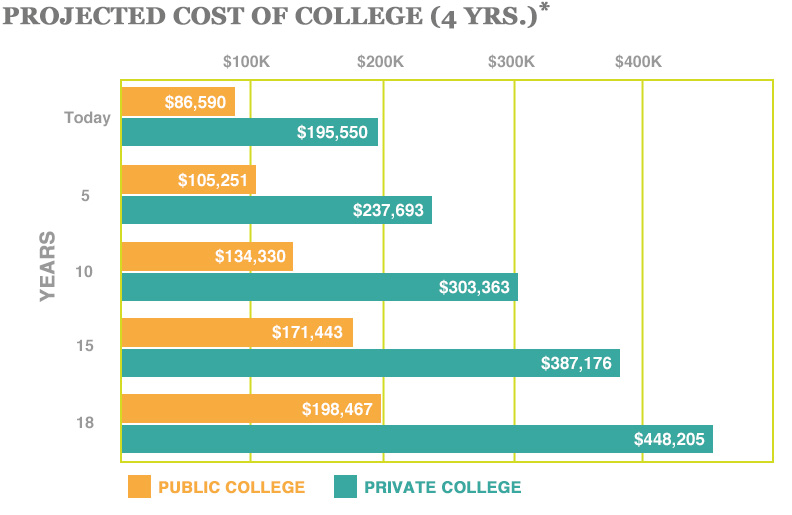
Cost of College CollegeCounts 529
The actual price you pay may be higher or lower than the college's net price calculator estimate. The truth is that most students pay less than their college's sticker price, or published price, thanks to financial aid. Instead of looking at the published price, concentrate on your net price — the real price you'll pay for a college.
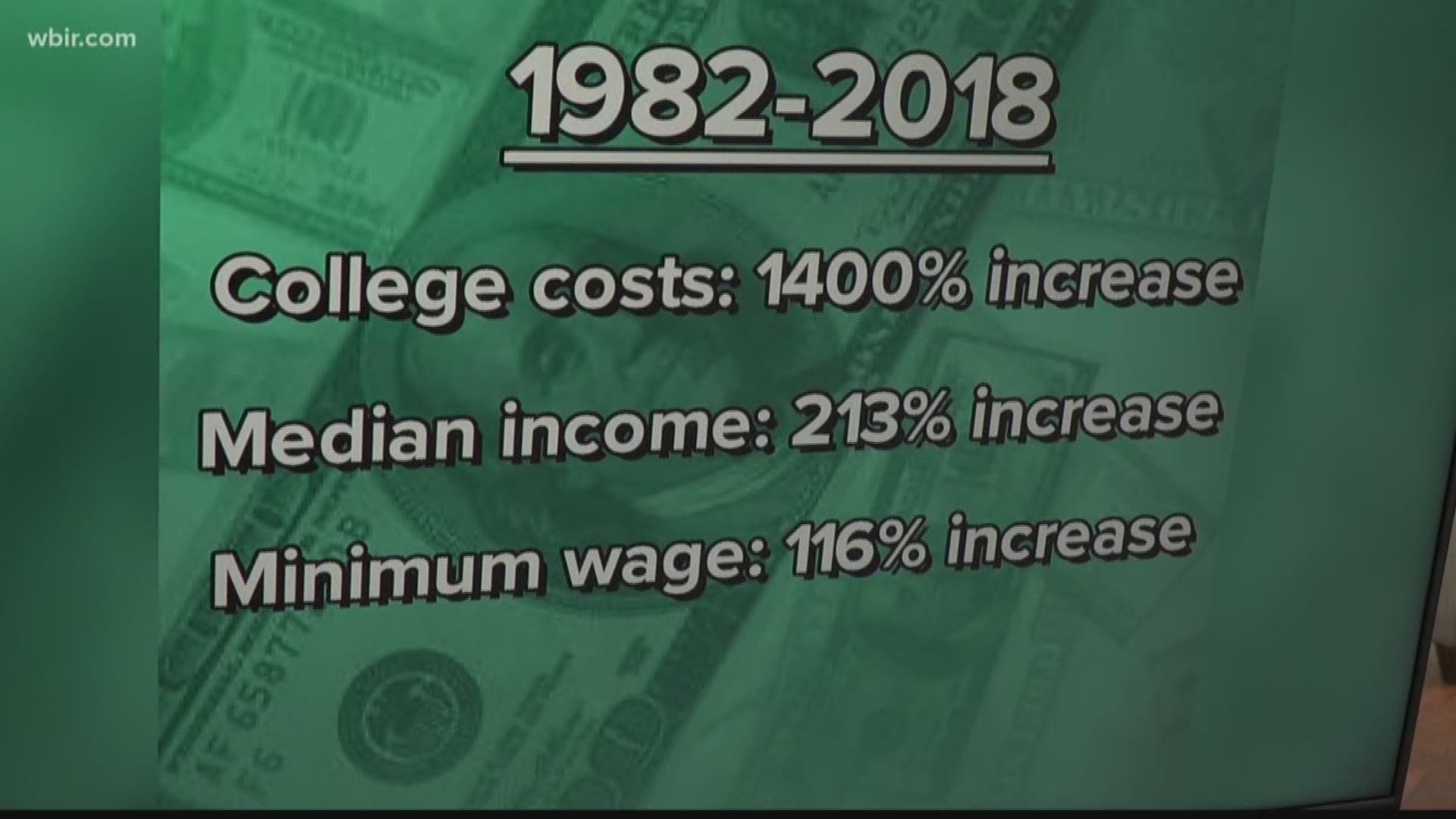
College costs vs. how they've risen
According to the College Board, the average tuition and fees at private colleges during the 2020-21 school year was $37,650. For in-state students attending public schools, tuition and fees cost $10,560; for those attending out of state, it was $27,020. And that's just tuition. Add in other costs such as room and board, books and supplies.
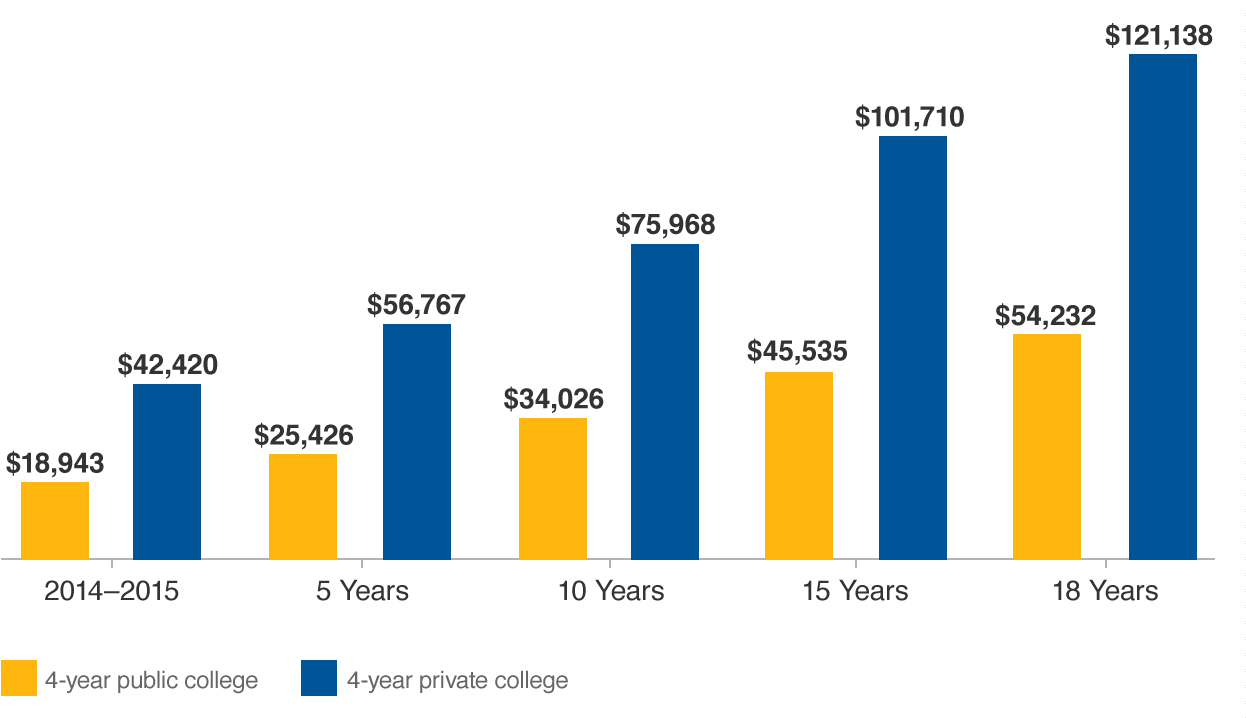
Cost of college NY 529 Direct Plan
This calculator is mainly intended for use in the U.S. Today's annual college costs: or. Select an Average 4-year private: $60,420 4-year in-state public: $28,840 4-year out-of-state public: $46,730 2-year public: $19,860. College cost increase rate: 5% recommended. Expected college attendance duration:
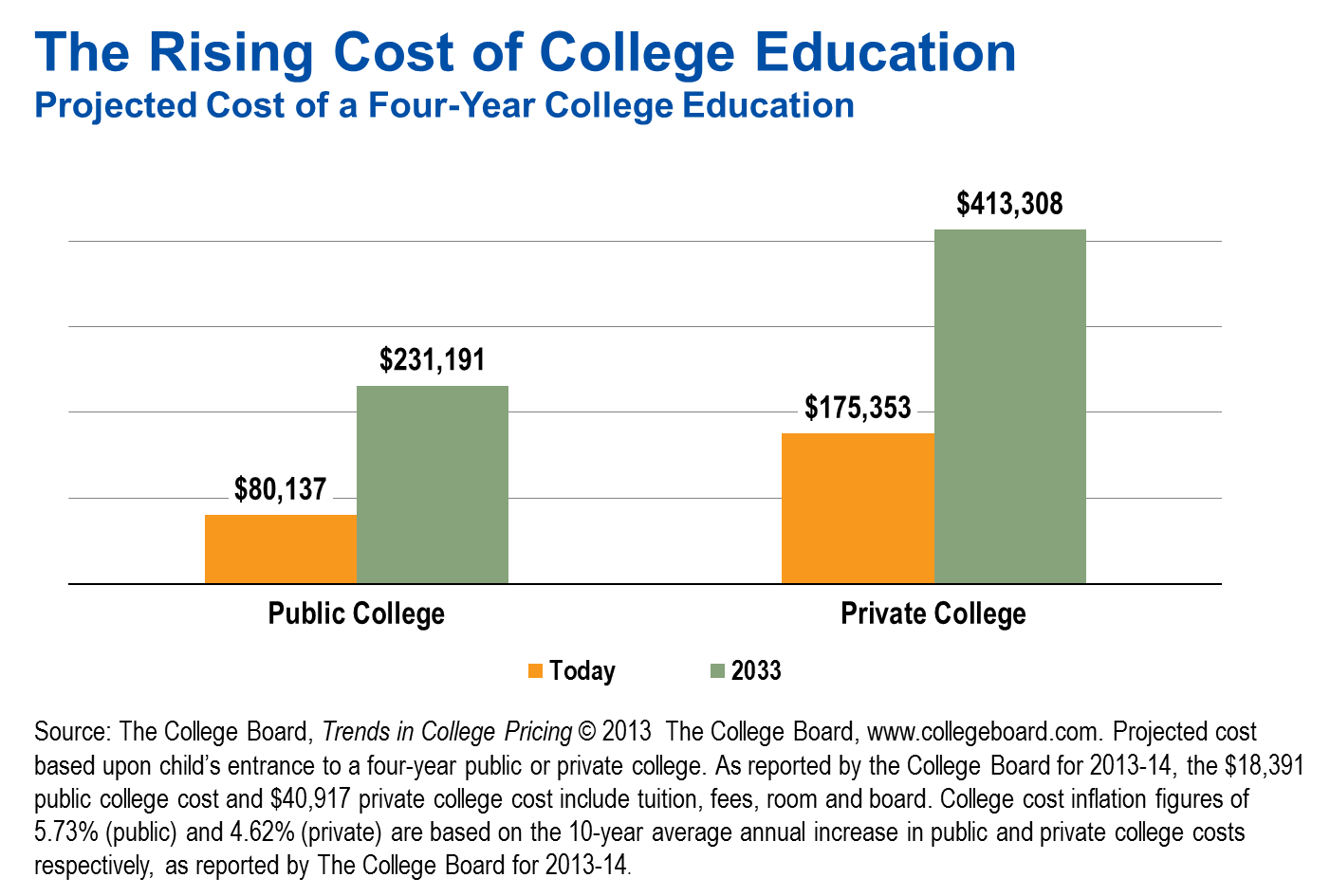
College Costs 101 What are 529 Plans? Franklin Templeton Investments
For example, in 2015-16, the average published price of in-state tuition and fees for public four-year colleges was about $9,410. But the average net price of in-state tuition and fees for public four-year colleges was only about $3,980. So don't let the prices published on college websites discourage you. The number you actually need to know.

How Much Should Getting A College Education Really Cost?
Net Price Calculator. Almost all colleges will offer a net price calculator on their website. You can use the links below to estimate your net price at hundreds of colleges that use the College Board Net Price Calculator. Use the Net Price Calculator to learn how much college might cost your family after aid.

Average Cost of College Tuition Increases 5.2 Nationwide / But UC and
On its website, the North Carolina school advertises a sticker price of $78,608 for tuition and fees; room; board; and books, supplies and personal expenses for the 2019-2020 school year. But most.

Revitalize, or Die.
The schools would ask this family to pay between $39,000 and $45,000 for one year. That means students from those $200,000 families can save about $25,000 per year or more off the total retail.
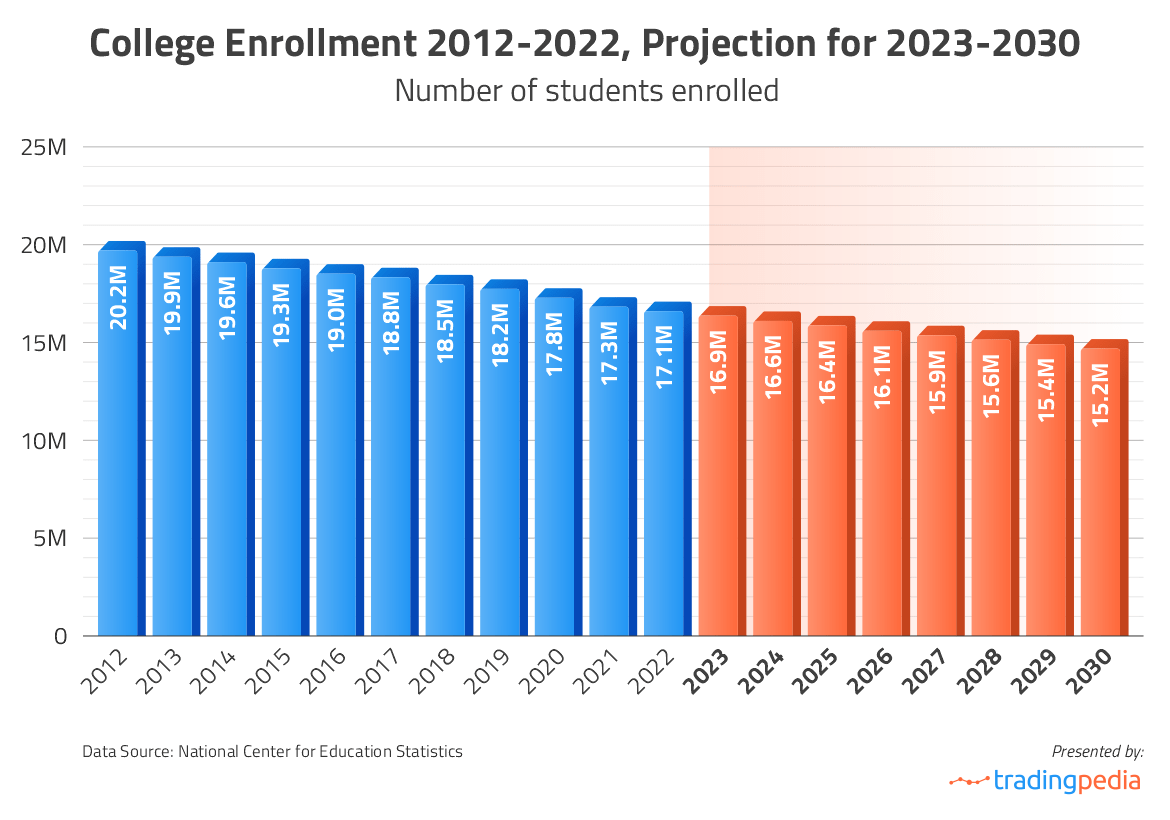
College enrolment in the U.S. could drop below 17 million in 2023
In 2023-24, average estimated budgets for full-time undergraduate students range from $19,860 for public two-year in-district students and $28,840 for public four-year in-state students to $46,730 for public four-year out-of-state students and $60,420 for private nonprofit four-year students. FIGURE CP 1.
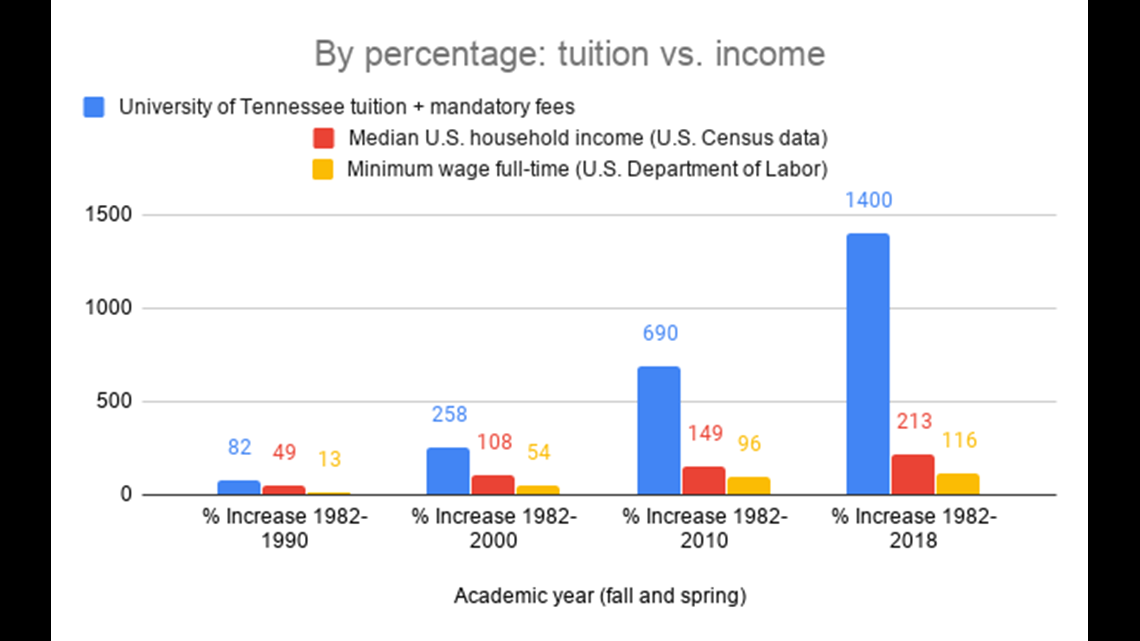
College costs vs. how they've risen
For a four-year degree, students could expect to pay an average of 30,031 U.S. dollars for tuition, fees, room, and board in 2022. Despite rapidly rising costs, the U.S. continues to see high.
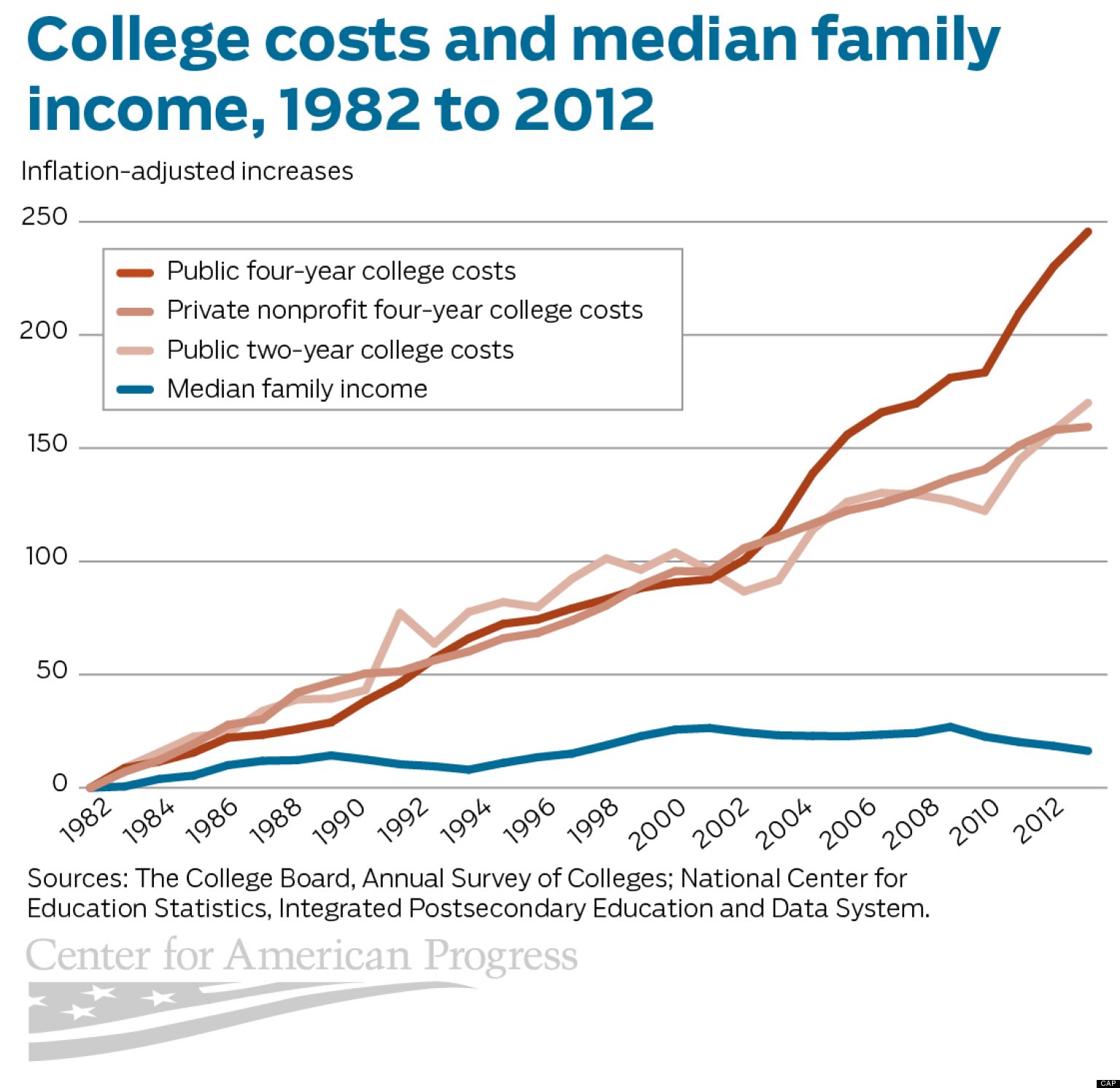
How College Costs Are Skyrocketing Out Of MiddleClass America's Reach
Average tuition and fees 5 were higher in academic year 2021-22 than in 2010-11 for first-time, full-time undergraduate students at public and private nonprofit 4-year institutions (in constant 2021-22 dollars). 6 In contrast, for private for-profit 4-year institutions, average tuition and fees were lower in 2021-22 than in 2010-11. . Specifically, average tuition and fees in 20
College Tuition Increase Graph
Public Two-Year College (in-district students) $3,860. Public Four-Year College (in-state students) $10,940. Public Four-Year College (out-of-state students) $28,240. Private Four-Year College. $39,400. These numbers are based on published tuition costs, not what students actually end up paying out of their own pockets.
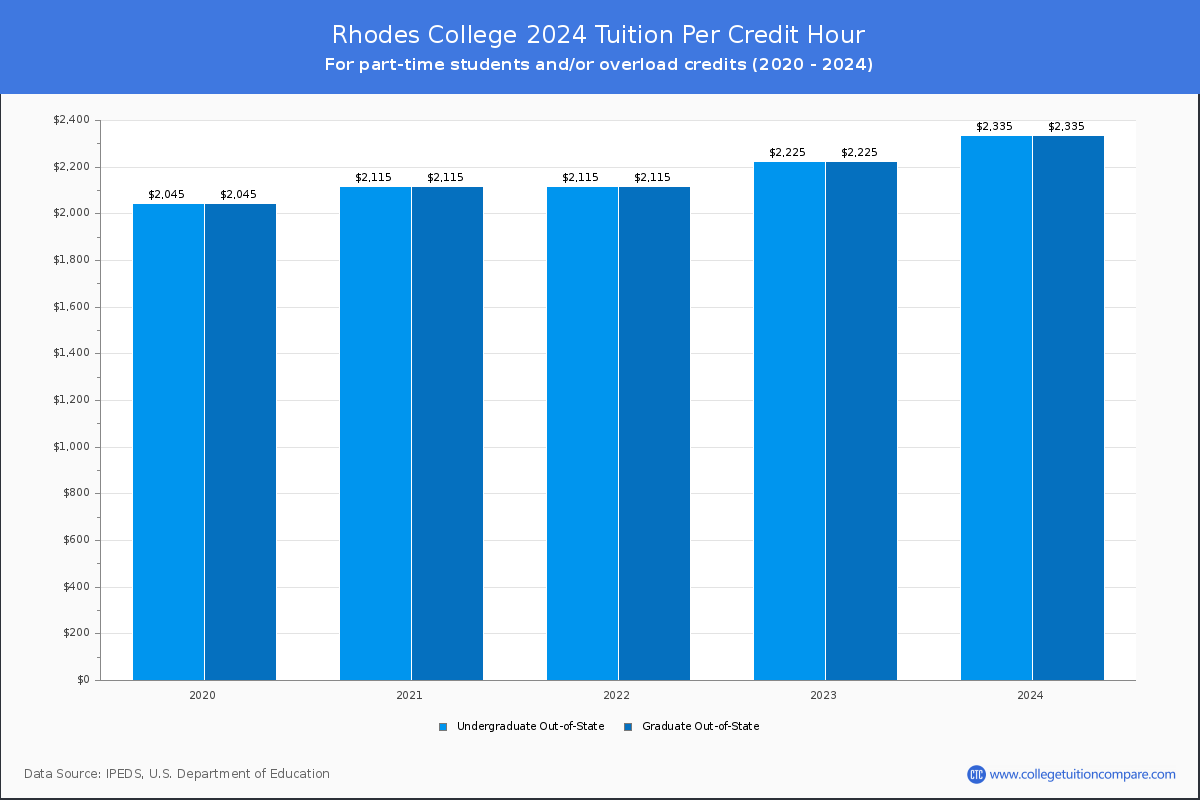
Rhodes College Tuition & Fees, Net Price
These costs include tuition, fees, books, and supplies. For example, if you go to a four-year college, your tuition might be $ 10,000 a year. You might also have to pay fees for things like the student center fee or the school library fee. Books and supplies can add up, too. These costs can be different depending on the type of postsecondary.
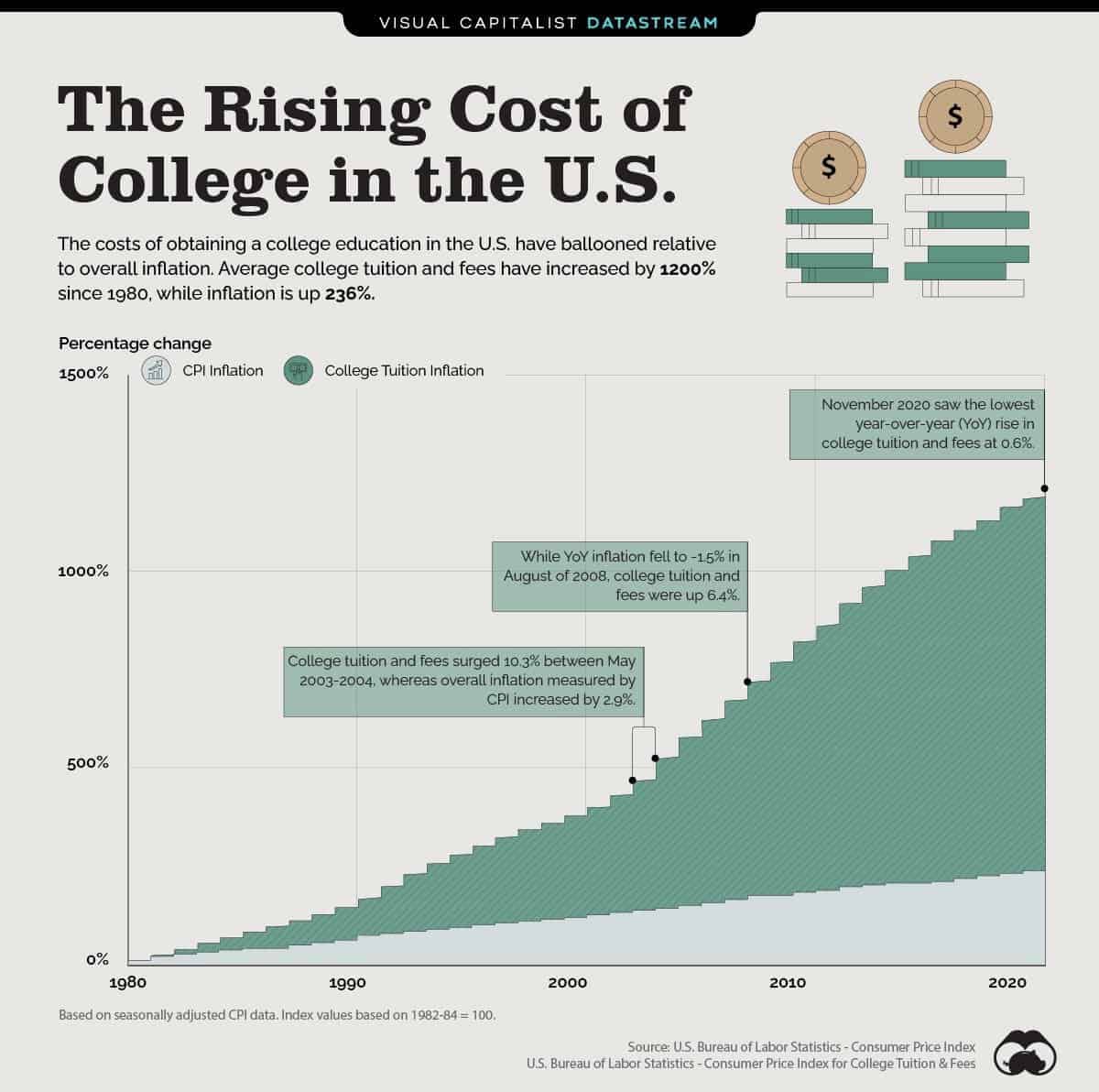
U.S. Colleges’ MindBlowing Cost Of Tuition Daily Infographic
11. Student Budgets, 2022-23. In 2022-23, average budgets for full-time undergraduate students range from $19,230 for public two-year in-district students and $27,940 for public four-year in-state students to $45,240 for public four-year out-of-state students and $57,570 for private nonprofit four-year students.

See the Average College Tuition in 20202021 Paying for College US News
After adjusting for inflation, the average undergraduate tuition, fees, room and board has more than doubled since 1964, from $10,040 to $23,835 in 2018. Tuition has recently grown the fastest at public and private non-profit institutions, for which tuition has gone up 65% and 50%, respectively, since 2000.